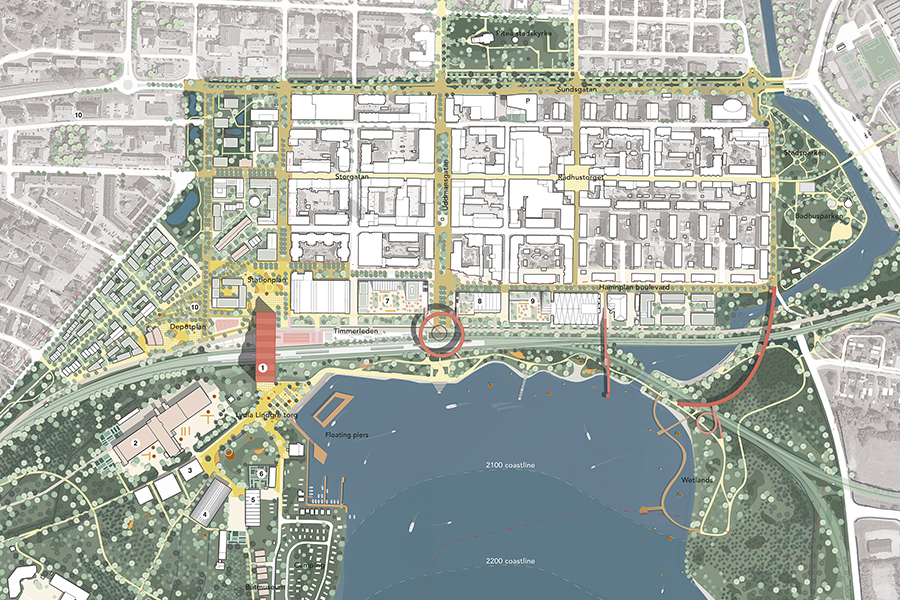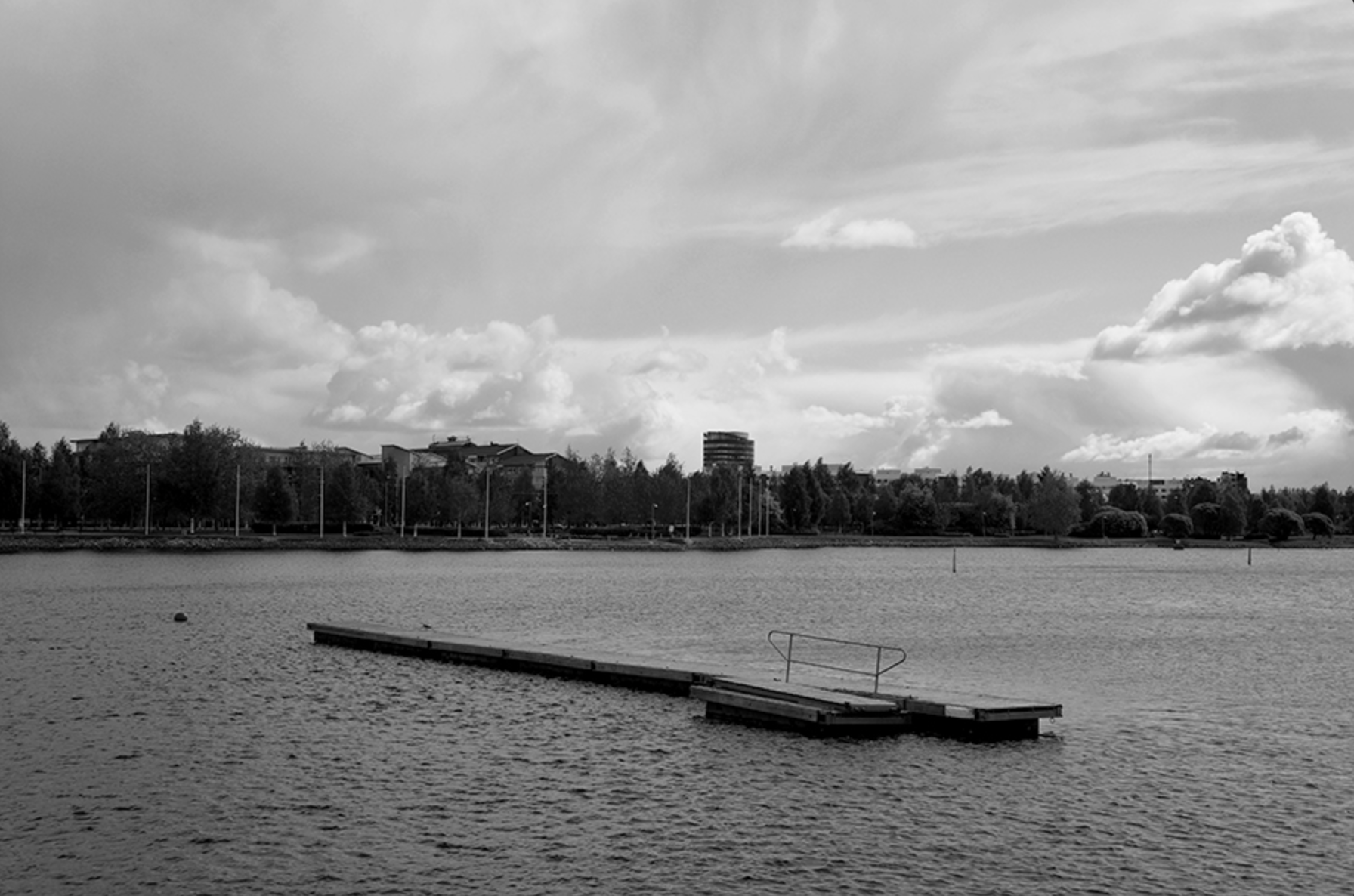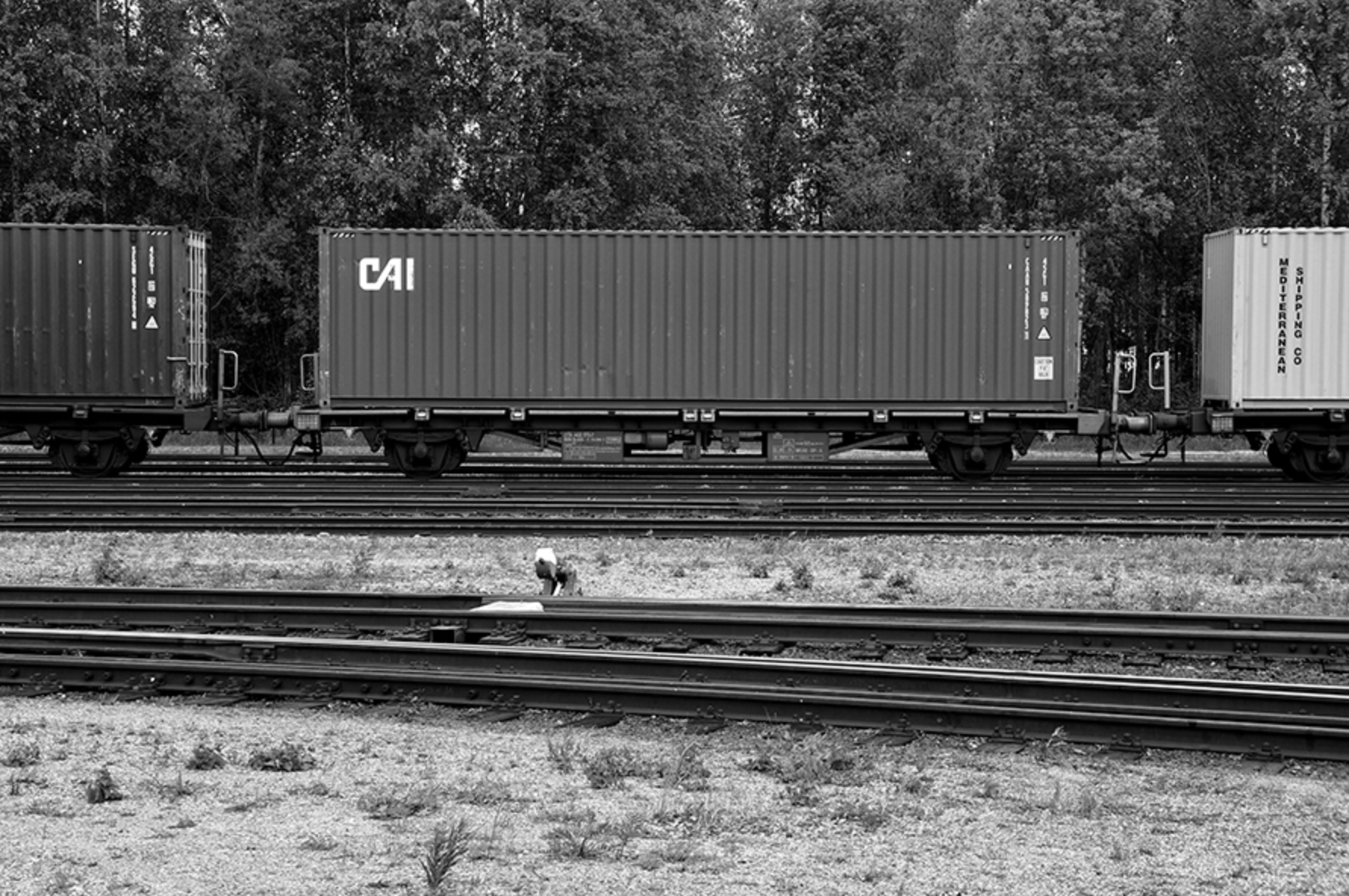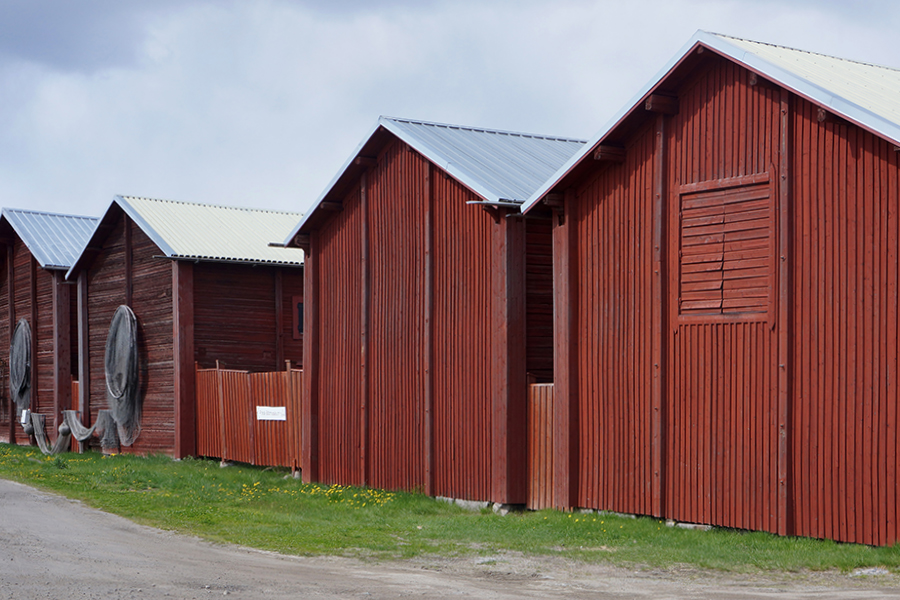Solander Ring. A vision for a social, connected, and climate-resilient Piteå
Piteå (SE) - Winner

TEAM PORTRAIT
VIDEO (by the team)
INTERVIEW
Click on the images to enlarge
1. How do you define the main issue of your project in relation with the theme “Living Cities Imagining architecture taking care of the milieus”? And in which way do you think your project can contribute to an ecological and/or social evolution?
In our vision the implementation of a new railway infrastructure becomes the opportunity to rethink the overall spatial strategy of Piteå towards a more resilient, connected, accessible and ecological town. By providing a flexible, feasible and green public space structure we envision a new urban ecosystem able to both innovate and integrate the specificities of the place able to strengthen the local sense of community by rooting the project in the city’s legacy.
2. How did the issues of your design and the questions raised by the site mutation meet?
Piteå is undergoing one of the biggest transformations in its history. In fact the new railway will have a major impact on the development of the town. Our vision aims at connecting the upcoming urban transformation with the broader challenges the Norrbotten region is facing in view of the climatic and socio economic transitions.
PROJECT:



Yes, we had previous experience in projects dealing with urban development connected to mobility hubs and about implementation of ecological and public space strategies for small cities. We get inspired by our previous experiences mixed with a careful study of Piteå’s historical and cultural context and its specificities.
SITE:



We proposed a flexible phasing strategy and integration of all the different levels of stakeholders. Our vision is a framework to start a dialogue with the local government about the future development of Piteå. Getting closer to the inhabitants is also fundamental to promote community driven design processes, in a transdisciplinary and non hierarchical way.
REFERENCES:



The seniors members (Giacomo and Jacopo) built the competition team by involving two team members each with whom they had previously collaborated. The team covers multiple skills such as Urban design, Architecture, Landscape Architecture, and public space design. The team is very diverse and international, with members from Italy, Germany, China, and India.
6. How could this prize help you in your professional career?
We see the prize as a great opportunity to further develop this project with the clients and advance our independent professional careers. We aim to deepen our knowledge and keep working in challenging environments, such as the Northern regions.
TEAM IDENTITY
Legal status: Consortium of companies
Team name: New Environments + BLU.works
Average age of the associates: 29 years old
Has your team, together or separately, already conceived or implemented some projects and/or won any competition? if so, which ones?
Yes, all our members have previously collaborated in a wide range of urban and landscape projects in different offices in Europe (MUST, KCAP, Openfabric) and in academic context (RavB, Politecnico di Milano, FAUP).








